+44 7736673783
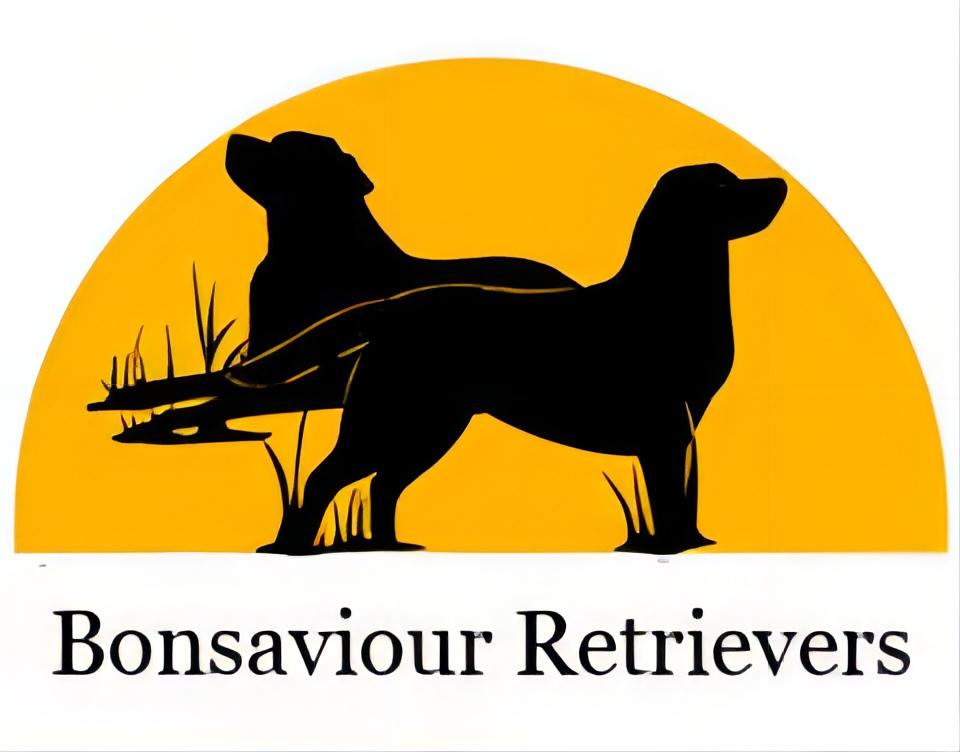
Bonsaviour Blog
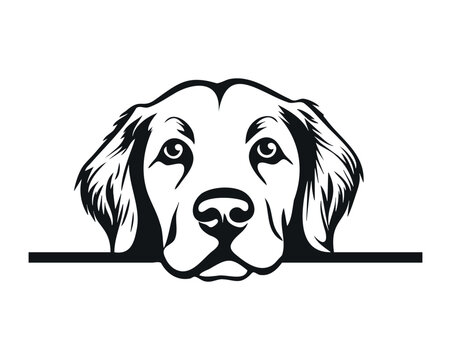
How to get the most out of puppy training classes
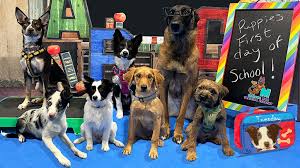
What is puppy school?
What will my dog learn at puppy school?
Your pup gets to meet other pet parents, exposing them to different types of people. Supervised playtime teaches your pup to interact with other dogs in an appropriate manner. Most classes involve handling (e.g., touching paws, tails, and ears), preparing your dog for grooming and other care situations. Some classes even introduce novel, potentially frightening objects—such as vacuum cleaners or wheelchairs—to help your dog form positive associations.

When should you start puppy training classes?
How long does puppy school last?
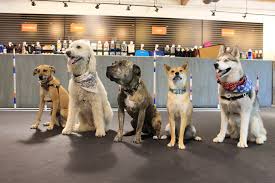
How much do puppy training classes cost?
Are puppy training classes worth it?
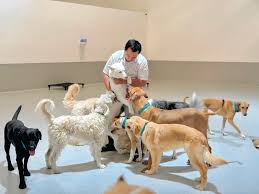

Can dogs get car sick? A comprehensive guide to motion sickness in dogs
What is motion sickness?
How do I know if my dog is car sick?
Excessive drooling Panting Whining Lethargy Restlessness Lip licking Defecation
Causes of motion sickness in dogs
Age : Puppies and young dogs are more prone to motion sickness, possibly because their inner ear structures, which help with balance, are not fully developed. As they grow, some dogs outgrow this condition. Anxiety or stress : Dogs that have a negative association with car rides—such as equating them with a trip to the vet—or that ride in the car very infrequently may show signs of anxiety when travelling by car. Genetics : Some dogs may be genetically predisposed to motion sickness. According to analysis done using Wisdom Panel DNA results and patient files from dogs diagnosed with motion sickness by a veterinarian, our team of scientists found a strong genetic component to motion sickness.

How to treat or prevent motion s ickness in dogs
Behavioural and environmental strategies
Early training : Getting your pup used to the car at a young age will help them avoid motion sickness later in life. Start by sitting with your dog in the car and turning on the engine. Then, take short car rides—just around the block. Gradually increase the duration of your trips as your dog gets used to being in a moving vehicle. Create a comfortable environment : Ensure your dog feels secure in the car. Use a crate or a dog seatbelt to provide a sense of safety, and bring your dog’s favourite bed or blanket from home. Positive reinforcement : Associate car rides with positive experiences. Offer treats and praise while in the car, and take your dog to enjoyable places like the park. Take frequent breaks : During long trips, take regular breaks to allow your dog to stretch, relieve themselves, and get some fresh air.
Medications
Anti-nausea medications Anti-anxiety medications
Natural remedies
Pheromones : Ask your veterinarian about products that use dog-specific pheromones known to help keep pups calm. Ginger : Ginger is known for its anti-nausea properties. Ginger supplements, if recommended by your veterinarian, may be helpful.
Final thoughts
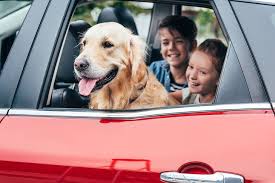
Best Dog Shampoo for Golden Retrievers
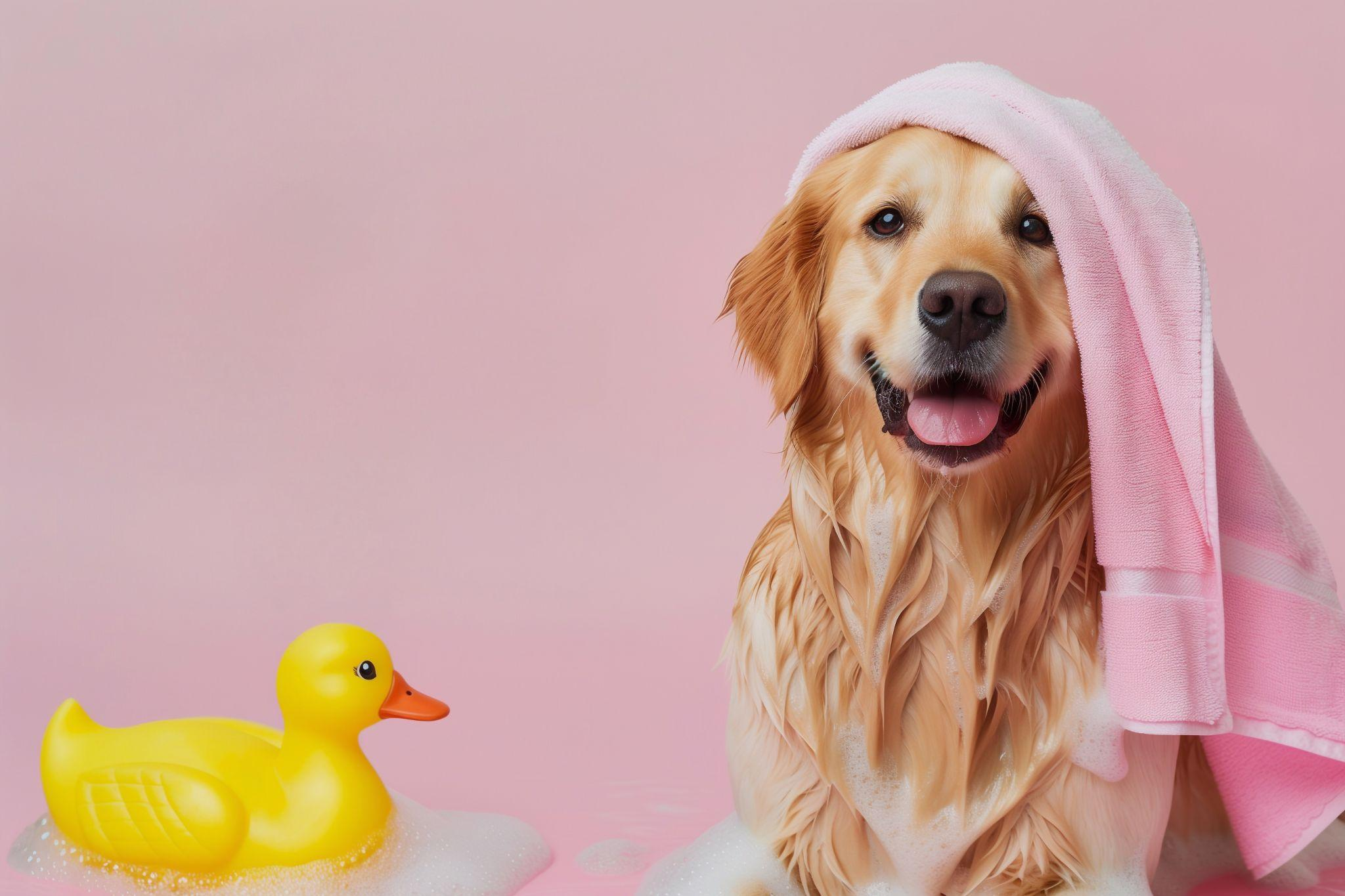
Why Your Golden Retriever Needs a Special Shampoo
Factors to Look Out for When Buying the Top Dog Shampoo for Golden Retrievers
5 Best Dog Shampoos for Golden Retrievers
1: Lavender Dog Shampoo - 400ml
2: Chamomile Dog & Puppy Shampoo - 5L
3: Hydrating Shampoo for Dry and Flaky Coats for Dogs 300ml
4: Lavender Fields | Dry Shampoo For Dogs & Cats | Spring Collection
5: Coconut Dog Shampoo - 5L
Tips for Bathing Your Golden Retriever
Bathing Tips:
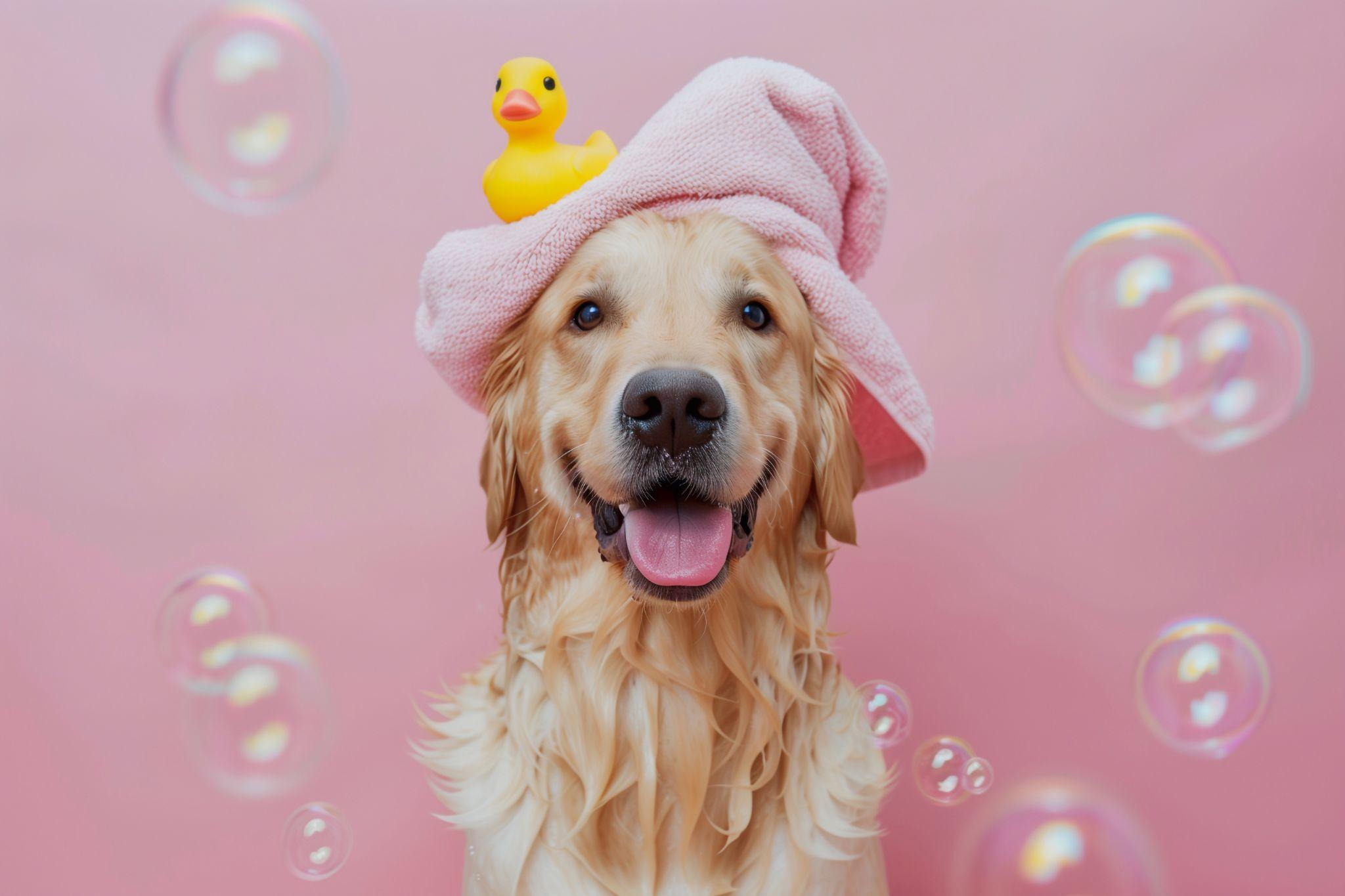
Choosing the Right Shampoo Based on Your Dog’s Needs
How Frequently Should You Bathe a Golden Retriever?
The Emotional Side of Grooming
Final Words
FAQs
Can I use human shampoo on my Golden Retriever?
What is the best Golden Retriever shampoo for allergies?
How often should you bathe a Golden Retriever?
Summer homemade dog treats
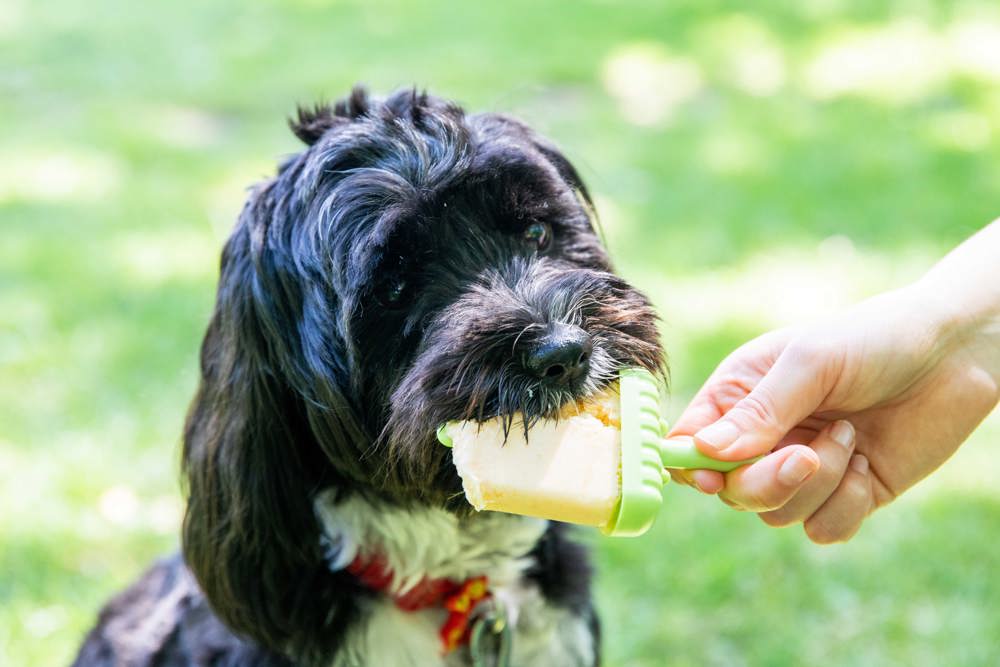
Our recipes

Summer pupsicles
300g cantaloupe melon 100g Greek yoghurt 2 tsp honey
Remove the skin and seeds of the melon, chop into small chunks and put in the freezer for three hours Add all ingredients to a food processor, or blender, and blitz until combined Add the mixture into ice lolly moulds, or an ice cube tray Put into the freezer for a minimum of four hours, or overnight Take the treats you want to give to your dog out of the freezer a few minutes before giving to them. This should help to make sure that they're not too hard for their teeth

Beach berry frosties
12 strawberries 3 tbsp peanut butter ( xylitol-free ) 3 tsp cold water
Wash the strawberries and cut off the tops Add the strawberries and water to a food processor, or blender, and blitz until they resemble a puree Pour the mixture into the moulds Add a small amount of peanut butter to the centre of the mixture Leave in the freezer for a minimum of four hours, or overnight Take the treats you want to give to your dog out of the freezer a few minutes before giving to them. This should help to make sure that they're not too hard for their teeth Once ready, top with a small amount of peanut butter

Sunshine ice lollies
200ml oat milk 110g pumpkin puree 110g Greek yoghurt 1 small banana 2 tbsp peanut butter ( xylitol-free ) 1 tsp honey 1 tsp chia seeds (optional)
Place all ingredients into a food processor, or blender, and blitz until the mixture forms a creamy texture Spoon the mixture into the ice lolly moulds, or a mould of your choice Put into the freezer for a minimum of four hours, or overnight Take the treats you want to give to your dog out of the freezer a few minutes before giving to them. This should help to make sure that they're not too hard for their teeth
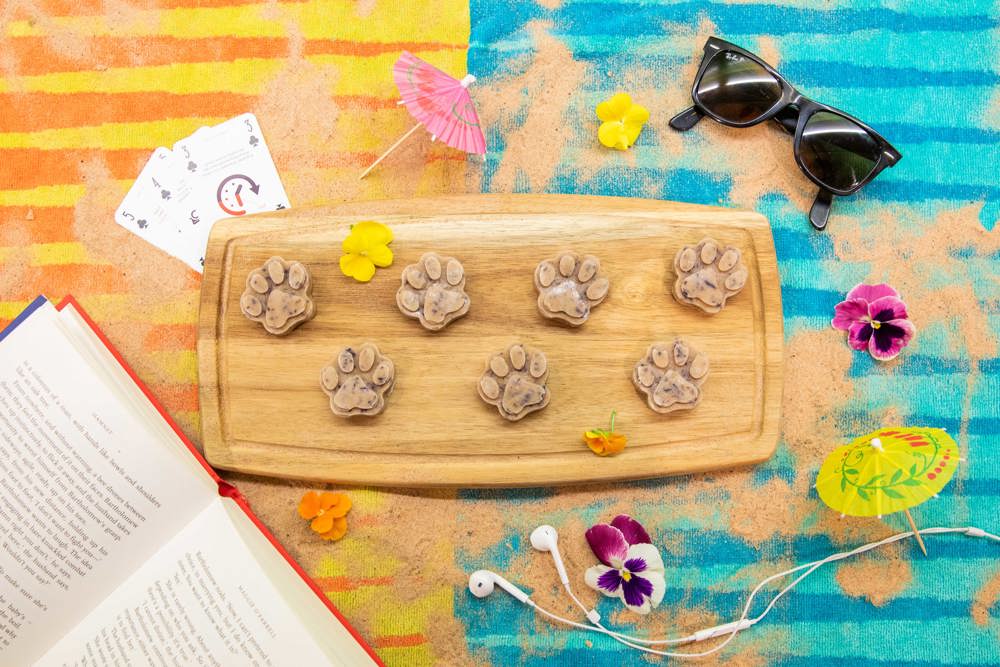
Berry boost paws
140g blueberries 110g Greek yoghurt 1 small ripe banana
Wash the blueberries Add all of the ingredients to a food processor or blender. Blitz for about 90 seconds until it forms a smoothie-like mixture Pour the mixture into the bone moulds, or an ice cube tray Put in the freezer for a minimum of four hours, or overnight Take the treats you want to give to your dog out of the freezer a few minutes before giving to them. This should help to make sure that they're not too hard for their teeth
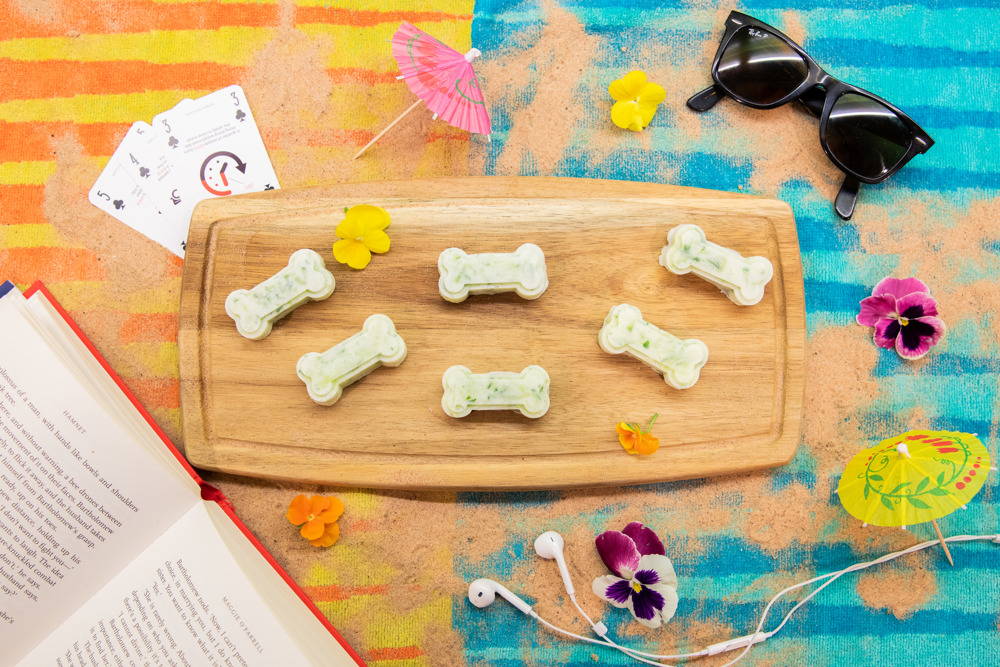
Cool-as-a-cucumber crunchies
110g Greek yoghurt 1 medium cucumber 1 tsp honey
Chop the cucumber into small pieces Add all the ingredients to a food processor, or blender, and blitz Pour the mixture into paw moulds, or an ice cube tray Put in the freezer for a minimum of four hours, or overnight Take the treats you want to give to your dog out of the freezer a few minutes before giving to them. This should help to make sure that they're not too hard for their teeth
Things to consider when making homemade treats for your dog
Take the treats you want to give to your dog out of the freezer a few minutes before giving to them. This should help to make sure that they're not too hard for their teeth Use smaller moulds to put in the freezer to make them less hard and less likely to cause a blockage if swallowed whole.
.
RULES, ETHICS AND HONESTY IN THE DOG SHOW WORLD

Moving a finished dog up Not moving a finished dog up Showing after a dog may be finished Not showing after a dog may be finished Committee chairs having someone show their dogs at a show where they are chairing Committee chairs changing ownership of dogs so that they can be shown Making negative to others about dogs at ringside Commenting about others publicly on social media Breaking a major (even if for a very genuine reason) Showing under a judge that you know, or that owned a dog you bred to, or that you had put you up before, or that you had lunch with two years ago, etc, etc, etc. “Liking” pictures of dogs someone views as not a good dog The judging, basically, disagreeing with the judging sometimes to the point of publicly insulting a judge because their dog wasn’t put up



Vicki

